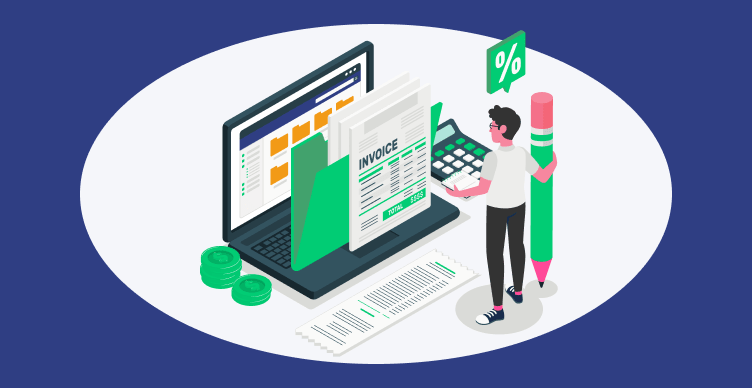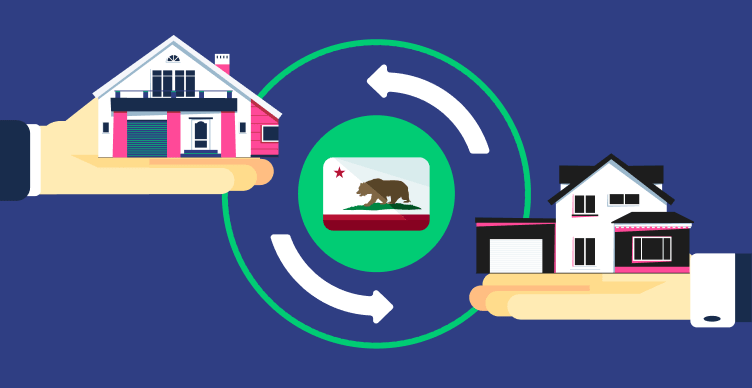Understanding trends in homeownership, rental, and homeowner vacancy rates provides important insight into housing market conditions. These key metrics track the balance of supply and demand in the housing market, indicating the availability and accessibility of both owned homes and rental properties. Analyzing these measures over time informs whether housing inventory meets population needs and highlights potential areas of imbalance. As such, monitoring these housing statistics gives perspective on affordability, flexibility, and ownership opportunities within local real estate markets.
Key Takeaways
- The national homeownership rate remained at 66% in Q1 2024 compared to last year, indicating stability in the balance of owner-occupied versus rental homes.
- Rental vacancies increased to 6.4% nationally in Q1 2023, up from 5.8% in Q1 2022, signaling a loosening rental market with more available units.
- Homeownership and renting appeal to different segments of the population, with homeowners tending to be older, wealthier, and have higher credit scores than renters.
- The median age for homeowners is 56 vs. 39 for renters; over 70% of homeowners are over 45, while half are under 45.
- Median income for homeowners is over $86,000 compared to $42,500 for renters. Homeowners also have much higher average credit scores.
- 75% of homeowners are white compared to just 50% of renters, while Black and Hispanic households each make up 20% of renters.
- In 2021, 25% of adults 25-34 lived in multigenerational households, up from 9% in 1971.
- First-time homebuyers fell to a record low of 26% of sales in 2022, down from 34% in 2021.
- Rising home prices, mortgage rates, and down payment barriers have made homeownership increasingly difficult, leading to a record low of first-time homebuyers.
- Median existing home prices rose 18.7% from Q1 2021 to Q1 2022.
- Mortgage rates nearly doubled from 3% to 7% from 2020 to 2023.
- The median home price has appreciated significantly, making buying less affordable compared to renting. Asking home prices are over 18 times higher than yearly rents, highlighting why buying remains out of reach for many renters without substantial savings.
Understanding Homeownership and Vacancy Trends
Understanding homeownership and vacancy rates provides crucial housing market insights for homeowners and real estate agents. Homeownership rate data indicates the proportion of households owning versus renting, revealing homebuying demand and selling opportunities. The rental vacancy rate shows the supply and availability of units for renters, influencing prices. Meanwhile, the homeowner vacancy rate impacts listing inventory for buyers.
Monitoring these metrics nationally and regionally allows homeowners to measure the balance of supply and demand in local markets when making real estate decisions. For agents, tracking shifts in occupancy and vacancies helps pinpoint areas of opportunity to list properties or match clients to homes. As key indicators of housing market conditions, these statistics help homeowners maximize sales and equity while guiding agents toward favorable deals for buyers and sellers.
The homeownership rate remains flat nationwide, indicating stability in the proportion of owner-occupied homes versus rentals.
- The national homeownership rate in Q1 2023 was 66.0%, unchanged from 66.0% in Q1 2022.
- The homeownership rates in the Northeast, Midwest, and South regions were statistically unchanged from Q1 2022, while the West was the only region that saw an increase compared to Q1 2022.

- The national rental vacancy rate in the first quarter of 2023 was 6.4 percent, up from 5.8 percent in the first quarter of 2022 and the fourth quarter of 2022. Compared to the rates in the first quarter of 2022, the first quarter of 2023 rate in the Northeast was lower, the rates in the Midwest and South were higher, and the rate in the West was not statistically different.

- The homeowner housing vacancy rate in the first quarter of 2023 was 0.8 percent, virtually unchanged from 0.8 percent in the first quarter of 2022 and 0.8 percent in the fourth quarter of 2022.
Increases in rental vacancies in the Midwest and South point to loosening rental markets while decreasing vacancies in the Northeast signal higher competition for rentals. Overall, the data on homeownership and vacancy rates indicate generally balanced conditions between housing supply and demand both nationally and regionally.
Housing permits, housing starts, and housing completions
Housing permits, housing starts, and housing completions are closely watched metrics that provide valuable insights into the supply side of the real estate market. These three indicators help track the development pipeline and homebuilding activity across the country. Housing permits measure how many new residential construction projects are being approved. Housing starts tracking the number of new home constructions that have broken ground. Finally, housing completions tally the number of homes that have finished construction and are ready for occupancy. Analyzing trends in these statistics over time informs the inventory of new housing stock coming online to meet buyer demand. The latest data on permits, construction starts, and completions offers clues into the health and outlook of the nation’s housing supply.
- Housing permits in June 2022 were at a seasonally adjusted annual rate of 1.44 million, down 3.7% from May 2022 and 15.3% below June 2021. This indicates slowing permit activity.
- Single-family permits specifically were 922,000 in June 2022, up 2.2% from May but still likely down from the previous June.
- Housing starts in June 2022 were at a rate of 1.434 million, down 8% from May 2022 and 8.1% below June 2021. This points to declining housing construction start.
- Single-family housing starts in June were at a rate of 935,000, down 7% from May. So single-family starts are slowing.
- Housing completions were at a rate of 1.468 million in June 2022, 3.3% below May but 5.5% above the June 2021 rate. So completions are holding steadier than permits and starts.

- Single-family completions were 986,000 in June, down 2.8% from May but likely above the prior June.
Homeowners vs. Renters: A Demographic Breakdown
Homeownership and renting appeal to different segments of the population. While both groups span diverse ages, incomes, and backgrounds, clear demographic differences emerge between typical homeowners and renters. This section will explore how factors like age, race, income, education, and household status impact whether American households own or rent.
- 44.1 million American households are renters.
- The average renter's insurance policy costs $180 per year.
- Recent data indicates over one-third of renter households are single tenants living alone, making up 38.1% of the total. Married couples account for 26.1% of renters, while 24.3% are other family arrangements. The remaining 11.5% of renting households are roommates sharing a rental unit.
- 48% of renters are under 30 years old, while the age group between 65 and older has the lowest renter distribution at 10%.

- Over 70% of homeowners are over 45, while over half of renters are under 35. The median age of homeowners in the U.S. is 56 years old, compared to 39 years old for renters.
- Millennials comprise the largest share (42%) of renters, while Baby Boomers comprise the largest percentage (42%) of homeowners.
- 75% of homeowners are white, exceeding their overall population share of 63% (USA). Black and Hispanic households each make up 20% of renters.
- Homeowners' and renters’ education levels are similar, except postgraduates are more likely to be homeowners (17% homeowners vs 12% renters)
- Higher-income leads to higher homeownership. The median income for homeowners is over $86,000 compared to $42,500 for renters.
Homeowners and Renters By Race
<table><tr><th></th><th>Renters</th><th>Homeowners</th></tr> <tr><td>White</td><td>51.80%</td><td>75.10%</td></tr><tr><td>Black</td><td>20.30%</td> <td>8.20%</td></tr><tr><td>Hispanic</td> <td>19.70%</td> <td>10.20%</td> </tr> <tr> <td>Asian</td> <td>5.40%</td><td>4.70%</td> </tr></table>
- Homeowners have an average credit score of 754 ("excellent"), while renters average 638 ("fair"). Higher scores lead to better mortgage rates.
- Nearly 60% of homeowners are married, over 70% live with families, and nearly 40% of renters live alone.

- Renting an average three-bedroom home in 2023 is more affordable than owning a comparable-sized median-priced property.
- Based on a study by the Federal Reserve, the median net worth of homeowners in the United States is 40 times greater than that of renters.
- The median net worth of homeowners is also 2x the median net worth of U.S. households nationwide.

- In 1971, multigenerational living among young adults was similar regardless of educational attainment. By 2021, 31% of young adults without a college degree lived in multigenerational arrangements, compared to 16% with at least a bachelor's degree.
- A quarter of U.S. adults ages 25 to 34 reside in a multigenerational family household in 2021, up significantly from 9% in 1971.
The Rising Costs of Homeownership
The costs of purchasing a home have risen substantially, making it an increasingly difficult feat for many buyers, especially first-timers. With home values appreciating rapidly in recent years, the gap between owning and renting has widened. Many potential buyers are priced out with hardly enough savings for a sufficient down payment. And as mortgage rates climb, monthly housing payments get further out of reach. The result is historic affordability challenges and constraints that restrict access to homeownership. Just how intense is this financial squeeze for today's prospective homeowners? The latest housing data reveals the magnitude of the barriers today's buyers face.
- The median asking rent of $1,462 per month equals an annual rent of $17,544. With the median asking home sales price at $319,000, the typical home for sale is over 18 times more expensive to purchase than to rent annually. Such a significant difference highlights why buying a home may be out of reach for many renters without substantial savings for a downpayment.
Quarterly Housing Affordability Index
<table><tr><th>Period</th><th>Median Price</th><th>Monthly P&I Payment</th><th>Median Family Income</th><th>Composite Affordability Index</th></tr><tr><td>Q1 '22</td><td>$372,000</td><td>$1,397</td><td>$85,953</td><td>128.2</td></tr><tr><td>Q2 '22</td><td>$412,700</td><td>$1,837</td><td>$87,181</td><td>98.8</td></tr><tr><td>Q3 '22</td><td>$398,100</td><td>$1,838</td><td>$88,250</td><td>100</td></tr><tr><td>Q4 '22</td><td>$378,400</td><td>$1,967</td><td>$90,234</td><td>95.5</td></tr><tr><td>Q1 '23</td><td>$371,200</td><td>$1,859</td><td>$91,919</td><td>102.1</td></tr></table>
- A typical existing single-family home with a 20% down payment had a monthly mortgage payment of $1,840, up 50% year over year.
- For first-time home buyers, the starter home price is $315,500 in 2023, just slightly lower than the previous year, priced at $321,600. With a 10% downpayment, the monthly mortgage payment is priced at $1825.
- The percentage of first-time homebuyers dropped to 26% in 2022, a record low and a significant decrease compared to 2021, when first-time buyers made up 34% of home sales. This is the lowest level since the National Association of Realtors started tracking the metric. The plummeting share of new homebuyers signals intensifying affordability challenges and barriers to entering the real estate market.
Purchasing and owning a home comes with considerable expenses. In recent years, the financial burdens of homeownership have increased notably for many potential buyers. Key factors driving this surge include rapidly appreciating home values, rising mortgage interest rates, and high inflation. Together, these trends have made owning real estate more difficult for many.
With an understanding of the key data points, we can better grasp the constraints and trade-offs today's buyers face in pursuing property ownership.
- Housing prices increased 18.7% from Q1 2021 to Q1 2022.
- Housing prices rose 4.3% from Q1 2022 to Q2 2023.
- The Federal Housing Finance Agency’s House Price Index indicates a 0.7% increase in home values nationally from April to May 2022.
Change in FHFA State House Price Indexes
(Seasonally Adjusted, Purchase-Only Index, 2023Q1)
<table><tr><th>State</th><th>1-Year Change</th><th>5-Year Change</th></tr><tr><td>South Carolina</td><td>9.53</td><td>70.84</td></tr><tr><td>North Carolina</td><td>9.41</td><td>75.5</td></tr><tr><td>Maine</td><td>8.94</td><td>76.41</td></tr><tr><td>Vermont</td><td>8.82</td><td>63.8</td></tr></table>
- Drilling down regionally, monthly gains ranged from a dip of 0.5% in New England to growth of 1.7% in the Pacific division between April and May of this year. The story differs on a 12-month timescale, with the Mountain division witnessing a 2.7% yearly decline while the East North Central division saw the largest surge at 5.5%.
- The median existing-home sales price in June 2023 was $410,200. This was the second-highest median price ever recorded since January 1999, when NAR began tracking the data.
- Mortgage interest rates rose from 3% during the pandemic to 7% in 2023.
- Homebuyers with a $3,000 monthly mortgage budget lost $30,000 in purchasing power from February 2023 to July 2023
- The rising mortgage rates have significantly reduced home buying power and affordability over the past year. A year ago, in July 2022, a homebuyer with a $3,000 budget could afford a $510,000 home. By February 2023, a homebuyer with a $3,000 budget could afford a $480,000 home. Five months later, in July 2023, with mortgage rates continuing to increase, that buyer's budget of $3,000 could now only afford a $450,000 home, $60,000 less than in July 2022.
- The average borrower getting a mortgage in 2023 will have a monthly payment of around $2,823 if getting a 30-year fixed-rate mortgage and $3,724 on a 15-year fixed-rate mortgage.
- New Jersey has the highest property tax rate at 2.47%, followed by Illinois, Connecticut, New Hampshire, and Vermont.
- Hawaii has the lowest property tax rate at 0.29%, followed by Alabama, Colorado, Nevada, and Louisiana.
Conclusion
Nationally, homeownership rates have held steady, signaling stability in the balance between owned and rented housing. Demographic divides persist, with higher income and credit scores among homeowners versus renters. Generational shifts are also evident as younger adults increasingly embrace multi-generational living arrangements.
For many, homeownership dreams are moving out of reach as prices continue rising faster than rents, and down payments remain a barrier, especially for first-time buyers. With mortgage rates climbing, affordability challenges have intensified. Going forward, monitoring metrics like homeownership levels, demographics, and costs will be essential to understand accessibility and evolving preferences. The data reveal a complex environment where home ownership remains an aspiration, yet systemic obstacles persist, especially for lower-income, minority, and younger households.
FAQ
What is the current homeownership rate in the U.S.?
The national homeownership rate is 66%, which means that 66% of households own their home while 34% rent. This rate has held steady over the past year.
How do homeownership rates differ by age group?
Homeownership increases with age. Over 70% of homeowners are over 45, while half of renters are under 45. The median age is 56 for owners and 39 for renters.
What portion of homeowners versus renters are white?
75% of homeowners are white, exceeding their share of the total population at 63%. In contrast, just 50% of renters are white, while 20% are Black and 20% are Hispanic.
What's the median income difference between homeowners and renters?
The median income for homeowners is over $86,000 compared to just $42,500 for renters, indicating a significant affordability divide.
How have first-time homebuyers trended recently?
First-time buyers fell to just 26% of sales in 2022, a record low. This is down significantly from 34% in 2021, highlighting affordability issues.
How do median home prices compare to yearly rents?
The median home price of $319,000 is over 18 times higher than the $17,544 median annual rent, making buying challenging for renters without substantial savings.
How have mortgage rates changed in recent years?
Rates have nearly doubled from around 3% during 2020-2021 to approximately 7% in 2023, reducing purchasing power.
How have home prices appreciated recently?
Prices increased 18.7% from Q1 2021 to Q1 2022. Appreciation has slowed but remains positive.
What are typical monthly mortgage payments today?
With current rates, payments average around $2,800 for a 30-year fixed mortgage and $3,700 for a 15-year fixed.
Which states have the highest and lowest property tax rates?
New Jersey has the highest rate at 2.47%, while Hawaii has the lowest at 0.29%.
How have rental vacancy rates shifted over the past year?
The national rental vacancy rate increased to 6.4% in early 2023, up from 5.8% a year earlier. This indicates more availability and potentially slower rent growth.
What share of renters live alone versus with roommates or family?
Over one-third (38%) of renters live alone in single-person households. 26% live with a spouse or partner, 24% in other family arrangements, and 12% with roommates.
How prevalent are multigenerational households today compared to the past?
25% of adults ages 25-34 lived in multigenerational households in 2021, up substantially from just 9% in 1971. This highlights shifting preferences.
Sources:
- census.gov
- pewresearch.org
- fred.stlouisfed.org
- nmhc.org
- iii.org
- attomdata.com
- nar.realtor
- fhfa.gov
- redfin.com
- wallethub.com
- zillow.com












































































































.svg)
























